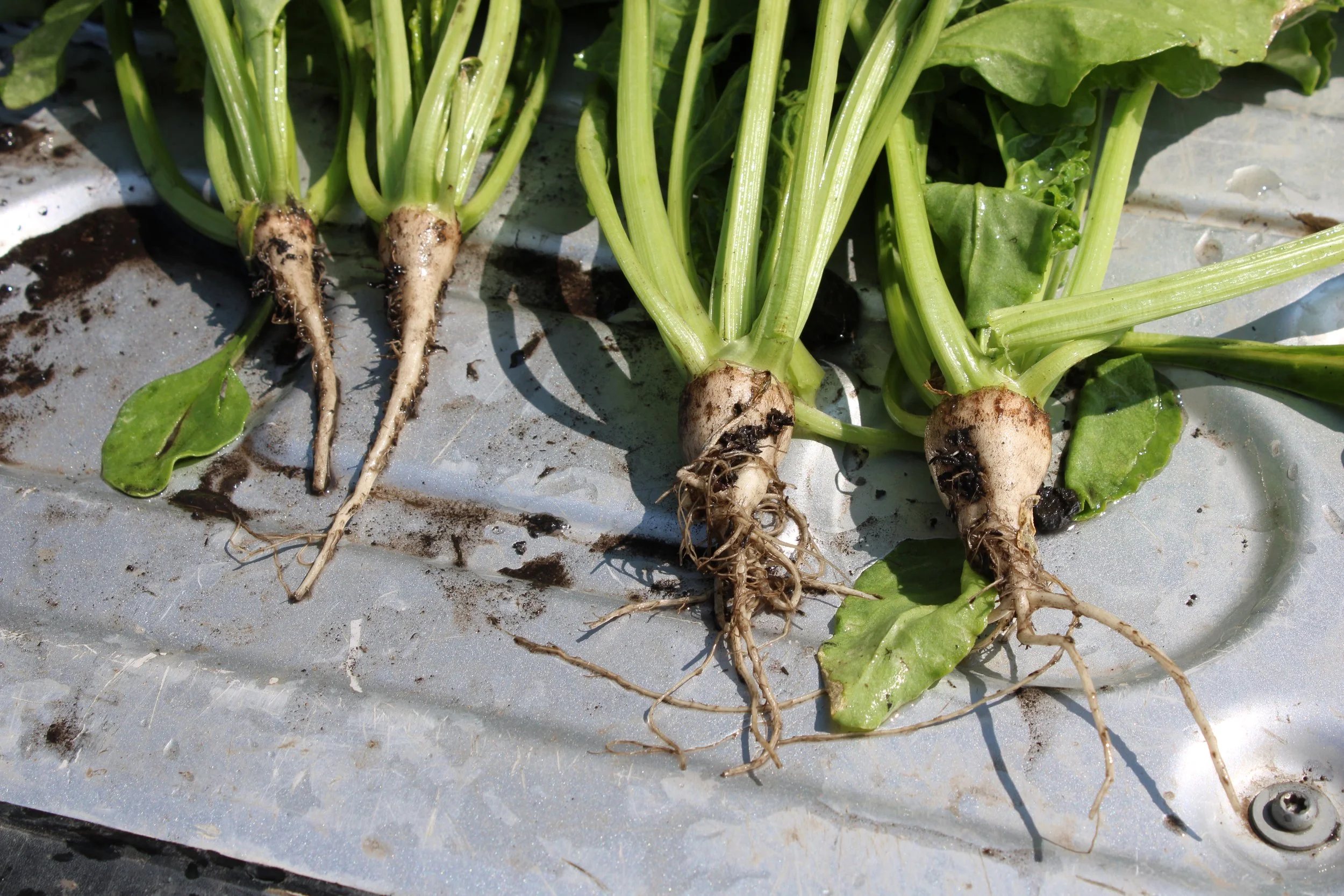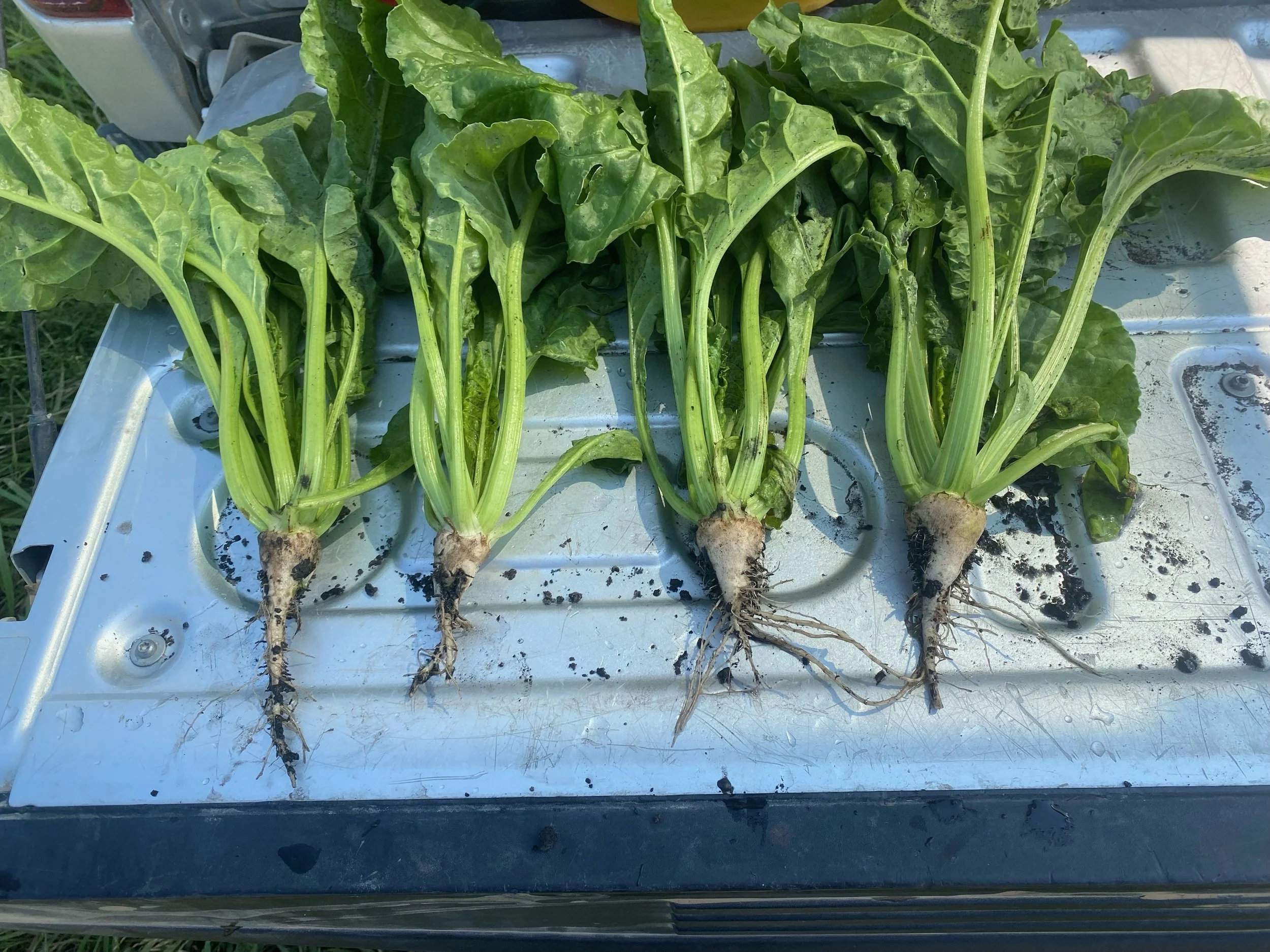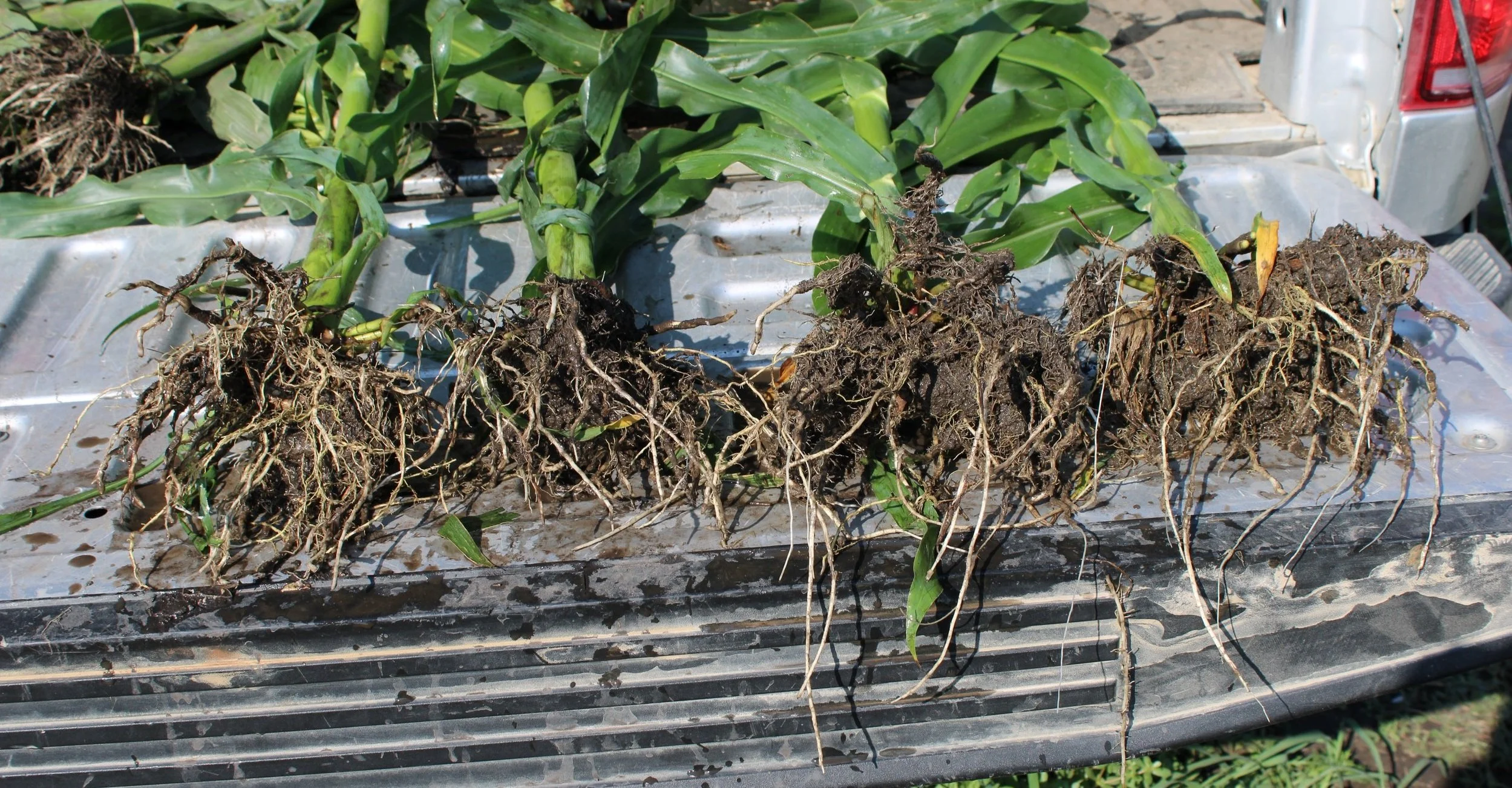On the Ground: Liquid Phosphate Fertilizer's Impact on Minnesota Crops
As soon as my plane touched down in Fargo, North Dakota, two hours late (thanks, United), North Central Rep Chuck Peppel and I were off speeding to plots in Minnesota. Known far and wide as the land of ten thousand lakes, it soon became apparent that the number had doubled. Water pooled in innumerable fields, creating ponds where corn and soybeans should've existed. Nature seems to have a sick sense of humor as this season starkly contrasts with the last, where insufficient moisture was a major concern. However, the stars aligned for Chuck and me as the weather for the week was conducive to successful crop scouting.
Our first stop was to examine sugar beet plots near Barnesville, Minnesota where we had applied our starter phosphate fertilizer. This was the first time I had personally worked with sugar beets and one of the first times we applied Free Phos 24 as a liquid sugar beet fertilizer. I was excited about the new experience, and my excitement would soon become outright elation. After locating the plots, Chuck went to work prying plants from the ground. Each plant pulled from the ground told the same story.
The treated beets were at least twice the size of the untreated beets. Attached is the photo below. I hardly need to explain which sugar beets were or were not treated with 3 gallons of Free Phos 24. This shouldn't have come as a complete surprise as the University of Minnesota states that starter phosphate fertilizers are more efficient in sugar beets than dry fertilizer.
Left 2 Plants: Control | Right 2 Plants: 3 gallons Free Phos 24
Left 2 Plants: Control | Right 2 Plants: 3 gallons Free Phos 24
University of Minnesota - Sugar Beet Fertilizer Guidelines
"Well, Chuck, what do you think?" I posed as a smile erupted on my face. "I'm a believer," he belted out in an off-key rendition of the popular Monkees song.
And he had good reason to be. Our first experience with the application of liquid phosphate fertilizer on sugar beets was off to a fantastic start. We weren't the only ones who were ecstatic; the grower, upon seeing the results, let out some choice words that I am not at liberty to put in this blog post.
This was the first good news for the day, but it certainly wasn't the last as we traveled a short distance from our liquid sugar beet fertilizer plot to a plot displaying our liquid phosphate fertilizer in corn. Unlike in sugar beets, I was more than prepared to see how Free Phos 24 impacted corn.
We had two corn plots 20 miles apart in Barnesville. Although the distance of 20 miles may not seem like a lot, the geography between the two was drastically different—one plot set in lowland and the other nested amongst hilly sloping terrain.
Our first stop in the lowlands saw us get taller by several inches as we walked through muck that clung to our shoes. After some trial and error, we found the flag marking our liquid phosphate fertilizer plot. Here, 3 gallons of Free Phos 24 went head to head with 3 gallons of 6-24-6. As our shovel wrenched roots from muck, it was evident that Free Phos 24 once again as in our 2023 Liquid Phosphate Fertilizer Corn Trials presented corn plants with greater root biomass.
In the photo below, the two plants on the left were treated with 3 gallons of 6-24-6, and the right two plants were treated with 3 gallons of Free Phos 24 liquid phosphate fertilizer.
Left 2 plants: 3 gallons of 6-24-6 | Right 2 plants: 3 gallons of Free Phos 24
The old adage “good things come in threes" rang true as we arrived at our second corn plot in the hills outside Barnesville. As we pulled up to the plot, Chuck gave me a quick history lesson of the region.
“The flat land we just came from was settled back in the day by German settlers. The hills we are in now are where the Norwegians decided to stake claims."
In this land of Norwegians, we had to hunt for our own staked claim—the flag marking the plot as the corn was well over our heads.
The waving hills led to variation throughout our replications. We scoured the scenery looking for an area to pull comparable plants from the grower standard plot, 3 gallons 6-24-6, and our 3 gallons Free Phos 24 liquid phosphate fertilizer plot. With some effort, we found an area with low variability and once again went about our ritual of divorcing roots from the soil. Free Phos 24 produced plants with significantly more root biomass. The treated plants clearly outperformed.
In the photo below, the left two plants were treated with 3 gallons of 6-24-6. The right two plants were treated with 3 gallons of Free Phos 24 liquid phosphate fertilizer.
Our plot work in Minnesota this year is very promising. While at the end of the day, the yield monitor reigns supreme, we are trending in the right direction. Seeing growers get excited about something new is downright infectious. And after all, when you have a product that works, experienced and enthusiastic team members like Chuck, and dependable, curious growers to work with, how could you not be excited?
As we reflect on our journey, it’s clear that a liquid phosphate fertilizer like Free Phos 24 is a game-changer. Not only boosting crop yields but also contributing to more resilient and healthy plants. In an era where agricultural efficiency and sustainability are paramount, innovations like these offer a beacon of hope. Our experiences in Minnesota this season have reaffirmed our belief in the power of advanced fertilizers. The consistent positive outcomes we've seen in both sugar beets and corn underscore the importance of continued research and adaptation in agricultural practices.
The versatility of liquid phosphate fertilizers lies in their ability to provide essential nutrients directly to the plant's foliage, allowing for quicker absorption and immediate impact on plant health and growth. Ensuring that plants receive the nutrients they need during critical growth stages, leads to more robust root systems and enhanced overall plant vigor. As we continue to explore and document the benefits of these fertilizers, we remain committed to supporting farmers in achieving their yield goals and promoting sustainable farming practices.
In conclusion, our time spent in the fields of Minnesota has been nothing short of enlightening. The impressive results we've witnessed with Free Phos 24 liquid phosphate fertilizer serve as a testament to the potential that lies within innovative agricultural solutions. We look forward to further collaborations with growers, researchers, and agricultural experts to continue pushing the boundaries of what is possible in crop production. Here's to a future filled with abundant harvests and thriving farms, driven by the power of cutting-edge fertilizers and dedicated agricultural professionals.




